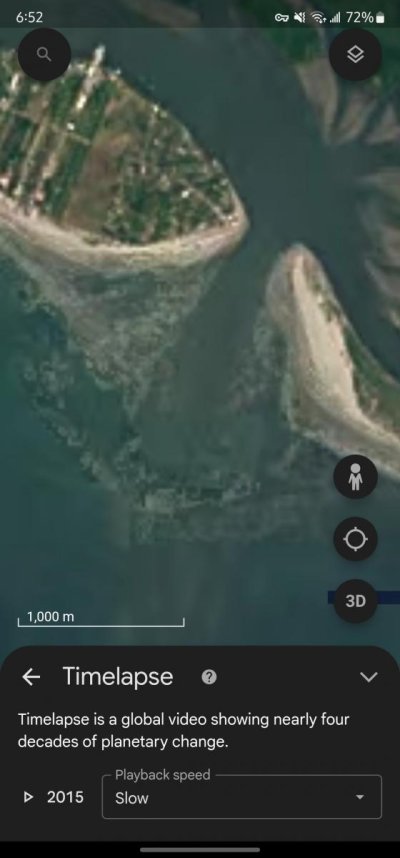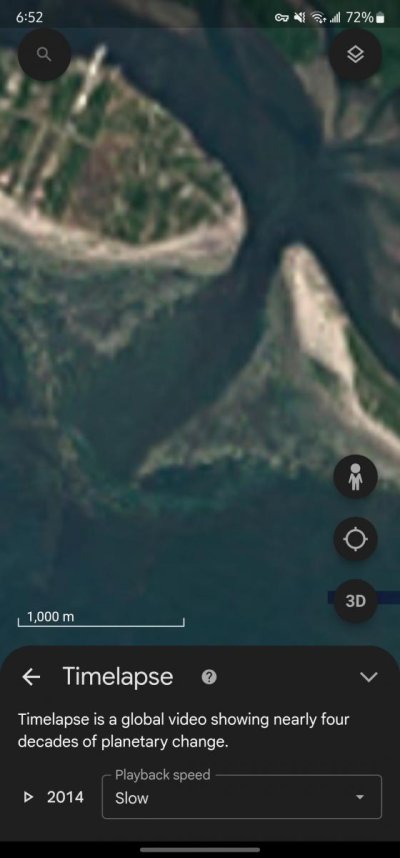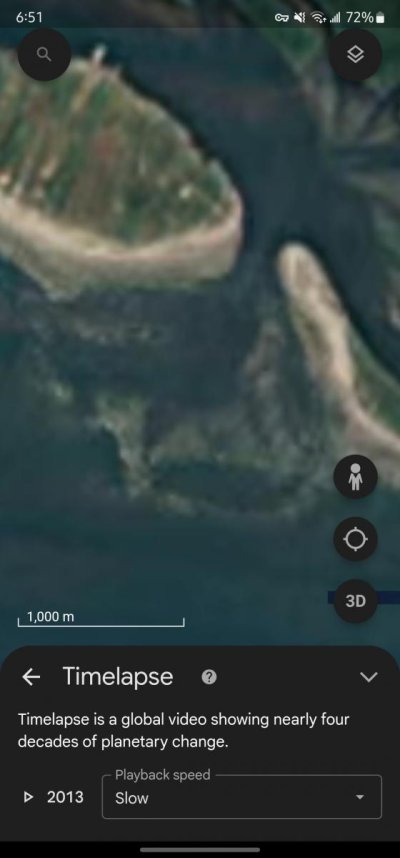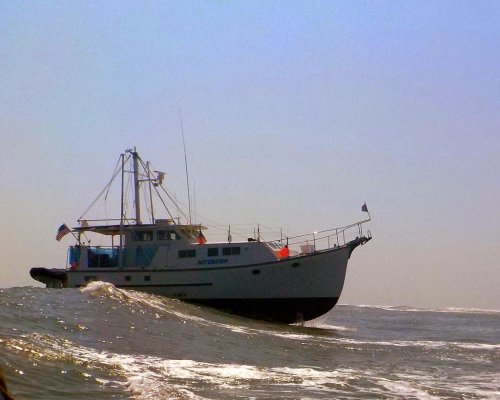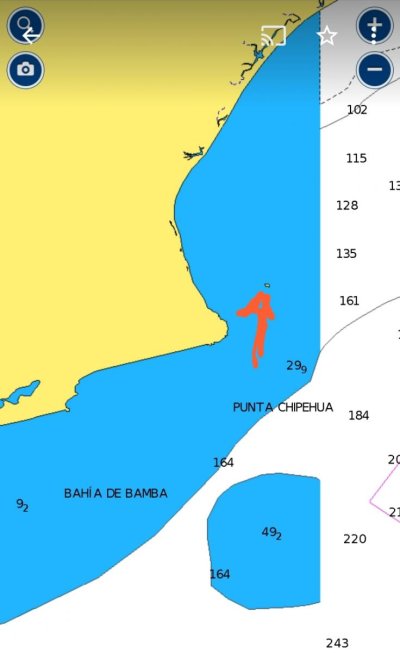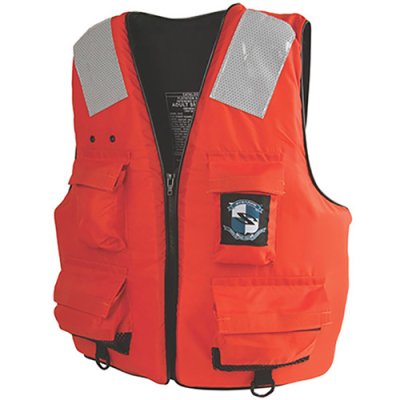- Joined
- May 11, 2019
- Messages
- 3,447
- Location
- United States
- Vessel Name
- Muirgen
- Vessel Make
- 50' Beebe Passagemaker
I posted this on our PNW to Florida thread, but have been asked to post it as a separate, stand alone thread so members could be appraised of this situation, and being forewarned with information, make their own decisions on whether or not it is in their best interests.
Short story. Experienced full time Sailor, Mark Thurlow, owner of Rum Truffle, a Moody 49, lost his boat while attempting to cross the Bar into Bahia del Sol, El Salvador, with the assistance of a Pilot Boat. After the disaster, Rum Truffle was then surrounded by pangas, and stripped/looted of everything that could be removed or unbolted. Mark lost everything except for his swim trunks, and T-shirt. Everything else was looted, down to his personal belongings and clothing. Further discussion is below.
Laura and I departed Bahia del Sol, the day prior to Rum Truffle attempting to come in. It was . . . interesting. The pilot boat was in front of us, until it wasn't. He had slowed back, moved to the right, then gone behind us by 100+ yards stating that it was too rough for him out in front of us! I asked him twice if we needed to back up and abort. No reply, then he stated that he could not see the way clear for us since he was in back of us, and that if we could see the way clear, to go!
Okay, big problem here. We’re not from here. Our sole experience with crossing an entrance bar was coming in days previously, where we made it in safe . . . but there was not a lot of information communication between the pilot and us. For instance, once we got over the bar, the pilot asked "Do you have the channel?" For information, there IS NO channel marked on the chart. There are red and green buoys marked on Navionics just inside the two sand spits to right and left, but they weren't actually there in real life, just on the electronic chart. No depth soundings, no channel marked. I just picked midpoint between the two sand spits, and headed in, watching the depth sounder while the pilot boat headed back over the bar to guide the next boat in. The channel widened out, and got deeper, but I had no way of knowing for sure that was going to happen.
The pilot boat headed back out to bring in three more power boats who had come down from Chiapas, MX with us.
Back to the exit on Wednesday morning, 6 March. When the pilot told me to "go if we could see the way clear", other than seeing the area, where we assumed the bar to be where the waves marching in were not breaking (as much), we had no idea where the deeper water was supposed to be. That's what the pilot boat was for. Still well short of the bar, the water depth was getting shallower, decreasing from 13' to about 11'. I felt I was getting closer to the sand spit to the West, since I was edging over to where the pilot boat had been before he unassed the AO and got behind us.
If we had aborted, it would have required going astern in the breaking waves, steering with the bow thruster, not knowing exactly how deep it was behind me, or attempting to turn around to right or left in the time period between wave sets, using thrust, rudder, and bow thruster to maximize the rate of turn. Problem with that is that at 50' and 85,000 lbs, this boat doesn't exactly turn on a dime, so based on the experience of attempting the departure on 2 March, which was aborted due to worse conditions at the bar than were forecast, I knew that we were going to take one set of waves broadside while in the middle of the turn. The elephant in the room, was not knowing exactly where the channel was (that's what the pilot boat is supposed to be for), We didn't know where the deeper water was, so we didn't know which direction to turn.
So I made the decision to go straight ahead, picking the point midway between the breaking waves and hoping for the best, as the decision that had the best chance of success. Apparently I guessed correctly, as we crossed the bar without further incident. Video Laura shot showed the depth sounder reporting a depth as shallow as 8.2 feet, so one of three things happened.
As far as we know, we were the 5th to last boat to successfully cross the Bahia del Sol bar inbound or outbound prior to the Rum Truffle’s disastrous loss. The reported 4.5’ draft power boat who came in first reported no issues.
The owner/operator of the 2nd boat, Long Windid, drawing 6 foot draft, stated that they hit bottom multiple times during the crossing in, then broached, laying on their side with the spreader bar in the water (so about 90 degree roll), then righted itself and passed over the bar. Rum Truffle, reported draft at 7’, drew 1 foot MORE water than Long Windid. Long Windid reported what had occurred to the pilot boat, who replied that they mis-read the waves . . . . Rum Truffle viewed the entire encounter, and asked the pilot boat what had happened. The pilot boat reassured Rum Truffle that all was okay, and they would guide them safely across the bar. My opinion: Rum Truffle should have been waved off by the pilot boat. But I wasn’t there.
We had serious concerns about crossing the bar into Bahia del Sol. Frankly, we had no prior experience navigating entrance bars, and were also concerned with potentially getting stuck inside the bar, unable to leave BDS, and potentially missing our 19 March, scheduled Panama Canal Transit. If we stayed in BDS for 1 week, we would still have 15 days to get to Panama City, a straight through run of 4 days, or about 11 days leeway for unexpected weather, or other issues, which would have left us with some time to slow down and visit more places on the way to Panama City.
Now it is coming out that many MANY boats have apparently struck the bar while attempting to cross, sustaining damage during the passage.
It has also come out that the pilot boat does not have any way of determining depth except a lead line, and also has no GPS to accurately determine or chart depths, or the location of any passage they may actually find . . . . This is irresponsible, if not criminal in my opinion.
As soon as Mark was safely recovered by the pilot boat, the pangas descended and immediately began stripping the wreck. No attempt was made by any authorities to prevent the looting. By the next morning, Rum Truffle had been stripped of anything that swimmers, divers, or looters could take, steal, or unbolt from the wreck.
Based on what we knew at the time, we elected to go into BDS, being swayed by the argument that “Thousands of boats have made the crossing before you, without incident, you’re being overly cautious!”
We did the risk assessment, looking at the risks, looking at possible outcomes ranging from best case of: “Successful crossing, no issues”, to worst case: “Loss of boat, loss of life”. I’m not being melodramatic here. My career background is Aviation, flying fixed wing aircraft, rotor wing aircraft (helicopters), single engine, multi-engine, instrument flight, NOE (Nap of the Earth), Night Vision Goggles, private and commercial, etc, for 30+ years, as well as being an aircraft mechanic, Aviation Safety Officer, and Aircraft Accident Investigator. I did risk assessments all the time, both formal, and informal. It was a way of life, and in many respects it has translated over to boating as well.
Conclusions:
Short story. Experienced full time Sailor, Mark Thurlow, owner of Rum Truffle, a Moody 49, lost his boat while attempting to cross the Bar into Bahia del Sol, El Salvador, with the assistance of a Pilot Boat. After the disaster, Rum Truffle was then surrounded by pangas, and stripped/looted of everything that could be removed or unbolted. Mark lost everything except for his swim trunks, and T-shirt. Everything else was looted, down to his personal belongings and clothing. Further discussion is below.
Laura and I departed Bahia del Sol, the day prior to Rum Truffle attempting to come in. It was . . . interesting. The pilot boat was in front of us, until it wasn't. He had slowed back, moved to the right, then gone behind us by 100+ yards stating that it was too rough for him out in front of us! I asked him twice if we needed to back up and abort. No reply, then he stated that he could not see the way clear for us since he was in back of us, and that if we could see the way clear, to go!
Okay, big problem here. We’re not from here. Our sole experience with crossing an entrance bar was coming in days previously, where we made it in safe . . . but there was not a lot of information communication between the pilot and us. For instance, once we got over the bar, the pilot asked "Do you have the channel?" For information, there IS NO channel marked on the chart. There are red and green buoys marked on Navionics just inside the two sand spits to right and left, but they weren't actually there in real life, just on the electronic chart. No depth soundings, no channel marked. I just picked midpoint between the two sand spits, and headed in, watching the depth sounder while the pilot boat headed back over the bar to guide the next boat in. The channel widened out, and got deeper, but I had no way of knowing for sure that was going to happen.
The pilot boat headed back out to bring in three more power boats who had come down from Chiapas, MX with us.
Back to the exit on Wednesday morning, 6 March. When the pilot told me to "go if we could see the way clear", other than seeing the area, where we assumed the bar to be where the waves marching in were not breaking (as much), we had no idea where the deeper water was supposed to be. That's what the pilot boat was for. Still well short of the bar, the water depth was getting shallower, decreasing from 13' to about 11'. I felt I was getting closer to the sand spit to the West, since I was edging over to where the pilot boat had been before he unassed the AO and got behind us.
If we had aborted, it would have required going astern in the breaking waves, steering with the bow thruster, not knowing exactly how deep it was behind me, or attempting to turn around to right or left in the time period between wave sets, using thrust, rudder, and bow thruster to maximize the rate of turn. Problem with that is that at 50' and 85,000 lbs, this boat doesn't exactly turn on a dime, so based on the experience of attempting the departure on 2 March, which was aborted due to worse conditions at the bar than were forecast, I knew that we were going to take one set of waves broadside while in the middle of the turn. The elephant in the room, was not knowing exactly where the channel was (that's what the pilot boat is supposed to be for), We didn't know where the deeper water was, so we didn't know which direction to turn.
So I made the decision to go straight ahead, picking the point midway between the breaking waves and hoping for the best, as the decision that had the best chance of success. Apparently I guessed correctly, as we crossed the bar without further incident. Video Laura shot showed the depth sounder reporting a depth as shallow as 8.2 feet, so one of three things happened.
- First, that may indeed have been the max depth of the actual "deep channel", if I was in it
- Second, the 8.2 foot reading may have been when our boat was in a serious trough
- Third, I may have not been in the actual channel, if such channel indeed existed, but may have been off to one side or the other. Not knowing where the “12 foot deep” channel actually was, this is a definite possibility.
As far as we know, we were the 5th to last boat to successfully cross the Bahia del Sol bar inbound or outbound prior to the Rum Truffle’s disastrous loss. The reported 4.5’ draft power boat who came in first reported no issues.
The owner/operator of the 2nd boat, Long Windid, drawing 6 foot draft, stated that they hit bottom multiple times during the crossing in, then broached, laying on their side with the spreader bar in the water (so about 90 degree roll), then righted itself and passed over the bar. Rum Truffle, reported draft at 7’, drew 1 foot MORE water than Long Windid. Long Windid reported what had occurred to the pilot boat, who replied that they mis-read the waves . . . . Rum Truffle viewed the entire encounter, and asked the pilot boat what had happened. The pilot boat reassured Rum Truffle that all was okay, and they would guide them safely across the bar. My opinion: Rum Truffle should have been waved off by the pilot boat. But I wasn’t there.
We had serious concerns about crossing the bar into Bahia del Sol. Frankly, we had no prior experience navigating entrance bars, and were also concerned with potentially getting stuck inside the bar, unable to leave BDS, and potentially missing our 19 March, scheduled Panama Canal Transit. If we stayed in BDS for 1 week, we would still have 15 days to get to Panama City, a straight through run of 4 days, or about 11 days leeway for unexpected weather, or other issues, which would have left us with some time to slow down and visit more places on the way to Panama City.
Now it is coming out that many MANY boats have apparently struck the bar while attempting to cross, sustaining damage during the passage.
It has also come out that the pilot boat does not have any way of determining depth except a lead line, and also has no GPS to accurately determine or chart depths, or the location of any passage they may actually find . . . . This is irresponsible, if not criminal in my opinion.
As soon as Mark was safely recovered by the pilot boat, the pangas descended and immediately began stripping the wreck. No attempt was made by any authorities to prevent the looting. By the next morning, Rum Truffle had been stripped of anything that swimmers, divers, or looters could take, steal, or unbolt from the wreck.
Based on what we knew at the time, we elected to go into BDS, being swayed by the argument that “Thousands of boats have made the crossing before you, without incident, you’re being overly cautious!”
We did the risk assessment, looking at the risks, looking at possible outcomes ranging from best case of: “Successful crossing, no issues”, to worst case: “Loss of boat, loss of life”. I’m not being melodramatic here. My career background is Aviation, flying fixed wing aircraft, rotor wing aircraft (helicopters), single engine, multi-engine, instrument flight, NOE (Nap of the Earth), Night Vision Goggles, private and commercial, etc, for 30+ years, as well as being an aircraft mechanic, Aviation Safety Officer, and Aircraft Accident Investigator. I did risk assessments all the time, both formal, and informal. It was a way of life, and in many respects it has translated over to boating as well.
Conclusions:
- Knowing what we knew prior to crossing into BDS, had we done a formal risk assessment, our decision to cross the bar with a pilot boat would still have been to cross.
- Knowing what we knew AFTER crossing the bar into BDS, had we done a formal risk assessment, our decision would have been NOT to cross the bar into BDS, even with the assistance of a pilot boat, instead, bypassing Bahia del Sol due to safety concerns.
- Once we had crossed the bar into BDS, our choices were limited, as we HAD to cross the bar outbound in order to continue our cruising life. We felt the risks were mitigated by doing the smart things, using a pilot boat, aborting the first exit attempt due to high surf, picking our window/bar conditions/tidal conditions, but if we had not already been inside the bar, we would not have intentionally chose to do the crossing again given the limited risk mitigation we had control over.
- If our boat drew 4’ or less, rather than the 5.5’ it does, our decision might well change, but apparently a catamaran, drawing only 3' is reported to have touched bottom several weeks ago, following the instructions of the pilot boat. Knowing what we know now, and given the mitigation efforts in effect up to time of the Rum Truffle loss, and the only mitigation efforts that BDS has stated it will be doing, I do not feel that the Bahia del Sol bar is safe for regular traffic drawing more than 4’.
- There is much institutional knowledge coming out now regarding how many boats have suffered damage or loss crossing the BDS bar, but it is as if that information, to this point, was intentional stifled.
- There is a serious lack of communication between the pilot boat and the boats being assisted in and out that needs to be addressed.
- We were never asked if we had any experience with any bar crossings, or BDS in particular. Communication between pilot boat and assisted boat in my opinion needs to be more like what happens when an aircraft is doing a GCA (Ground Control Approach). The aircraft is taking heading, altitude, and speed instructions from the Ground Controller. On final approach, the Ground Controller talks continuously to the aircraft, so that the aircraft knows that the line of communication is open. If there is a break in communication for, say 10 seconds, the aircraft assumes that communication is lost and executes a missed approach. A similar approach (no pun intended) is recommended for crossing the bar. The pilot boat should be in continuous communication with the assisted vessel, reassuring the assisted vessel that all is well. For us, there were multiple times when we weren’t sure whether we were still in communication, with our calls being unanswered by the pilot boat.
- Just because we made it over the BDS bar and back out again without damage or injury does not mean that we had made the right call. In retrospect, for Rum Truffle, even for the best of reasons it was the wrong call.
Last edited:


